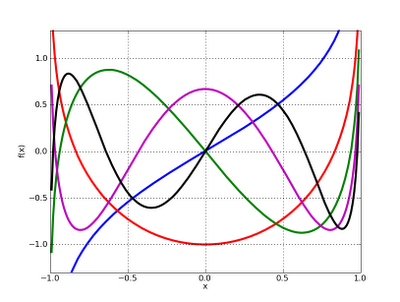- 10 Abril 2013
 El Grupo de Teoría de Aproximación y Polinomios Ortogonales organiza el Seminario cuyos datos se detallan a continuación:
El Grupo de Teoría de Aproximación y Polinomios Ortogonales organiza el Seminario cuyos datos se detallan a continuación:
Fecha: Viernes, 12 de Abril de 2013
Lugar: Aula A-26 de la Facultad de Ciencias, Universidad de Granada
Matrix Sylvester equations in the theory of orthogonal polynomials
Sesión 12:00. Amilcar Branquinho. Universidade de Coimbra.
Resumen: In this talk we characterize sequences of polynomials on the real line, orthogonal with respect to a linear functional such that its corresponding Stieltjes function satisfies a Riccati differential equation with polynomial coefficients, in terms of matrix Sylvester differential and also difference equations. Furthermore, under certain conditions, we give a representation of such sequences in terms of semi-classical orthogonal polynomials on the real line. For the particular case of semi-classical orthogonal polynomials on the real line, a characterization in terms of first order differential systems is established.
We also derive discrete dynamical systems, obtained as a result of deformations of the recurrence relation coefficients of the orthogonal polynomials related to the above referred Stieltjes functions.
Impact of combined electric and non-resonant laser fields on polar molecules
Sesión 13:00. Rosario González Férez. Universidad de Granada.
Resumen: We present a theoretical study of the impact of combined electric and non-resonant laser fields on the rotational dynamics of polar molecules. We assume that the electronic and vibrational motions of the molecules are not affected by the external fields, and analyze the rotational motion using the rigid rotor approach. In addition, we assume that the rotational period of the molecule is much smaller than the laser pulse duration, and work within this adiabatic approximation using a constant pulse envelope for the laser field. Then, we solve the time-independent Schrödinger equation by means of a basis set expansion in terms of the associated
Legendre functions or spherical Harmonics. We discuss the field-dressed rotational motion in terms of the alignment and orientation along the field axes. We refine our physical model and take into account the time profile of the non-resonant laser pulse. Thus, we solve the time-dependent Schrödinger equation by using the split-operator method. We compare our theoretical predictions to the results of the mixed-field-orientation experiments. The experimental results are rationalized in terms of non-adiabatic phenomena due to the field-induced couplings between states. We demonstrate that the adiabatic criteria "the laser pulse duration being longer than the molecular rotational period" is not correct. Based on our numerical results, we provide a new definition of this adiabatic limit and its physical interpretation.




